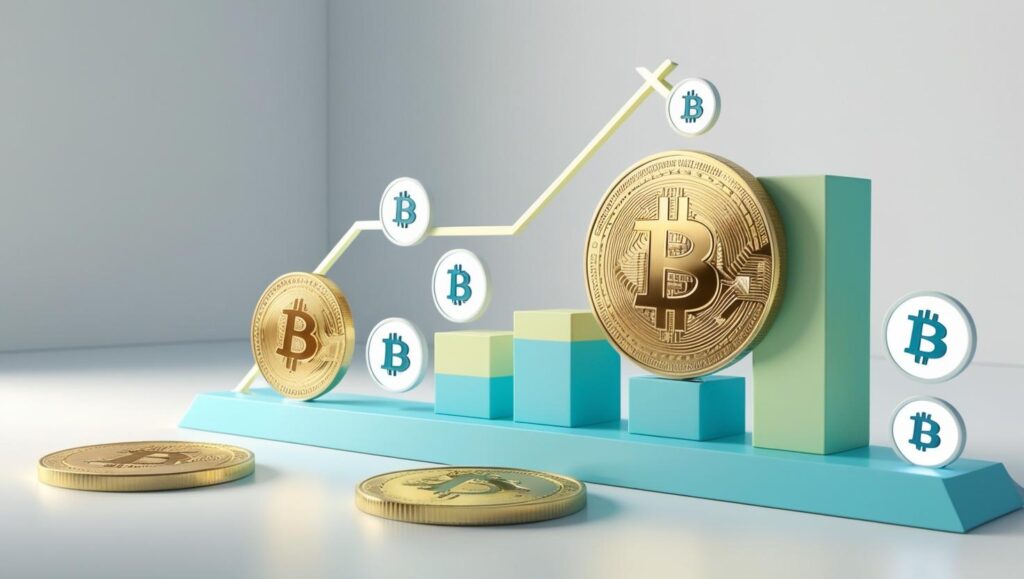
When investing in cryptocurrency, one of the first numbers you’ll come across is market cap. It’s often used to rank coins, assess their popularity, and determine their growth potential. But what exactly is market cap, and how does it affect crypto prices?
In this post, I’ll break it all down in simple English, from what market cap is, how it’s figured out, and why it’s important when you’re attempting to know or forecast the price of a coin.
What Is Market Cap in Crypto?
Market capitalization (or “market cap”) in crypto is the overall value of a cryptocurrency. It indicates how much cash is currently invested in a given coin or token.
Formula:
Market Cap = Current Price × Circulating Supply
Let’s assume:
- A coin is priced at $10
- There are 1 million coins circulating
Then:
- Market cap = $10 × 1,000,000 = $10 million
The simple equation provides a ballpark figure of how big or valuable a coin’s network is financially.
Why Market Cap Matters More Than Price
Low price = cheap = good deal is a common belief. But not necessarily in crypto.
For instance:
- Coin A = $0.50 for 10 billion coins
- Coin B = $50 for 100,000 coins
Market cap of Coin A = $0.50 × 10,000,000,000 = $5 billion
Market cap of Coin B = $50 × 100,000 = $5 million
Although Coin B is more “costly” per coin, Coin A has a significantly greater market cap. Therefore, if you want to know if a coin can continue to grow, market cap is a better metric to look at than price per coin.
Types of Market Cap in Crypto
Large-Cap Coins
- Examples: Bitcoin (BTC), Ethereum (ETH)
- Market cap: Typically greater than $10 billion
- Tend to be more stable but slowly increase
Mid-Cap Coins
- Market cap: $1 billion to $10 billion
- Moderate risk and reward
Small-Cap Coins
- Market cap: Less than $1 billion
- High risk, but with the possibility of higher returns
Understanding this assists you in balancing risk when creating a crypto portfolio.
How Market Cap Affects Price Movement
1. Liquidity and Volatility
- Large-cap coins (such as BTC) are more liquid, so prices move more smoothly.
- Prices for small-cap coins swing wildly with tiny buying or selling volume.
2. Growth Potential
- A $500 million market cap coin has further to grow than a $500 billion market cap coin.
- It is for this reason that investors pursue small-cap coins—they may 10x quicker, but at higher risk.
3. Investor Confidence
- High market cap typically indicates confidence.
- Fresh investors prefer to invest in coins that feature in the top 10 or top 50.
4. Institutional Interest
- Hedge funds and banks consider market cap before investment.
- They like large-cap coins due to stability and size.
Misconceptions About Price and Market Cap
❌ “Low price = undervalued”
Not necessarily. Some coins maintain low prices by printing out billions of tokens (e.g., Shiba Inu, Dogecoin). That doesn’t make them a better bargain than Bitcoin.
❌ “Price will go to $1”
People often say things like, “If Coin X hits $1, I’ll be rich.” But they forget to consider how many tokens exist.
For example:
- If a meme coin has 1 trillion tokens, reaching $1 would mean a $1 trillion market cap—more than Bitcoin’s. That’s unlikely.
Market Cap vs Fully Diluted Market Cap
Another term to familiarise yourself with is fully diluted market cap—this is not only the circulating supply, but every single token that can potentially exist.
Fully Diluted Cap = Price × Max Supply
This provides a more accurate estimate of how valuable the coin can potentially get, particularly for coins that drip tokens out over time (such as most DeFi projects).
Market Cap Manipulation: A Hidden Risk
Some low-volume altcoins might have artificially boosted market caps. A group could:
- Charge a high price on a low-volume exchange
- Only release a fraction of the supply
This makes the market cap appear large, but it’s fake. You should always review:
- Liquidity
- Volume
- Token distribution
How to Use Market Cap in Your Crypto Research
When analysing a coin:
- Inspect the market cap – use websites like CoinMarketCap or CoinGecko.
- Compare to comparable coins in the same category (DeFi, gaming, etc.).
- Consider growth potential based on existing market cap vs. competitors.
- Evaluate token supply mechanics – will additional tokens be made available?
- Be aware of fully diluted values and insider holdings.
Market Cap and Crypto Rankings
Platforms such as CoinMarketCap and CoinGecko list coins by market cap, not price. That’s why:
- Bitcoin is #1, although it’s not the fastest-growing coin
- Most low-cost coins are well down the list, even though they are “cheap”
If you’re only seeing price per coin, you’re not seeing the larger picture.
Final Thoughts
Market cap is the most significant figure to know in crypto. It’s a truer measure of value than the value of a single coin. Whether you’re investing in big-cap coins such as Bitcoin or searching for small-cap jewels, always include market cap to assess risk, reward, and potential.
Rather than asking “Can this coin get to $1?”, ask:
“Would the market cap be reasonable if this coin were to get to $1?”
That single question alone can keep you from investing in overpriced projects.




